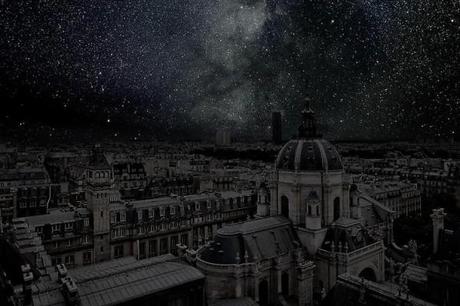









In Darkened Cities, the lights from these famous cities have gone, leaving you with an idea of what a city would look like without electricity.
Our greatest cities are often the sources of the most light pollution. In those places, we rarely see the stars. But, with a clever method of composite imaging, the French photographer Thierry Cohen has turned the lights out in the city to reveal the stunning stars that have always been overhead.
In his series “Darkened Cities,” Cohen creates a visual reminder of what the world would look like if it were free of light pollution, and asks us to ponder how an increasingly urban society can disconnect us from the natural world. New York’s Danziger Gallery explains Cohen’s process:
“Cohen’s method is original and precise and harkens back to the methodologies employed by early 19th century photographers like Gustave Le Grey. He photographs the world’s major cities, seeking out views that resonate for him and noting the precise time, angle, and latitude and longitude of his exposure. As the world rotates around its axis the stars that would have been visible above a particular city move to deserts, plains, and other places free of light pollution. By noting the precise latitude and angle of his cityscape, Cohen is able to track the earth’s rotation to places of atmospheric clarity like the Mojave, the Sahara, and the Atacama desert. There he sets up his camera to record what is lost to modern urban dwellers.”
By linking those two images, Cohen connects contemporary landscapes to the geometry of the stars (each image title includes corresponding longitudinal and latitudinal coordinates). In doing so, he not only juxtaposes the density of our tiny, crowded cities with the vastness of the universe, but also suggests that all our lights will one day fade. While we’re here, we owe it to ourselves to consider what’s been here all along.
